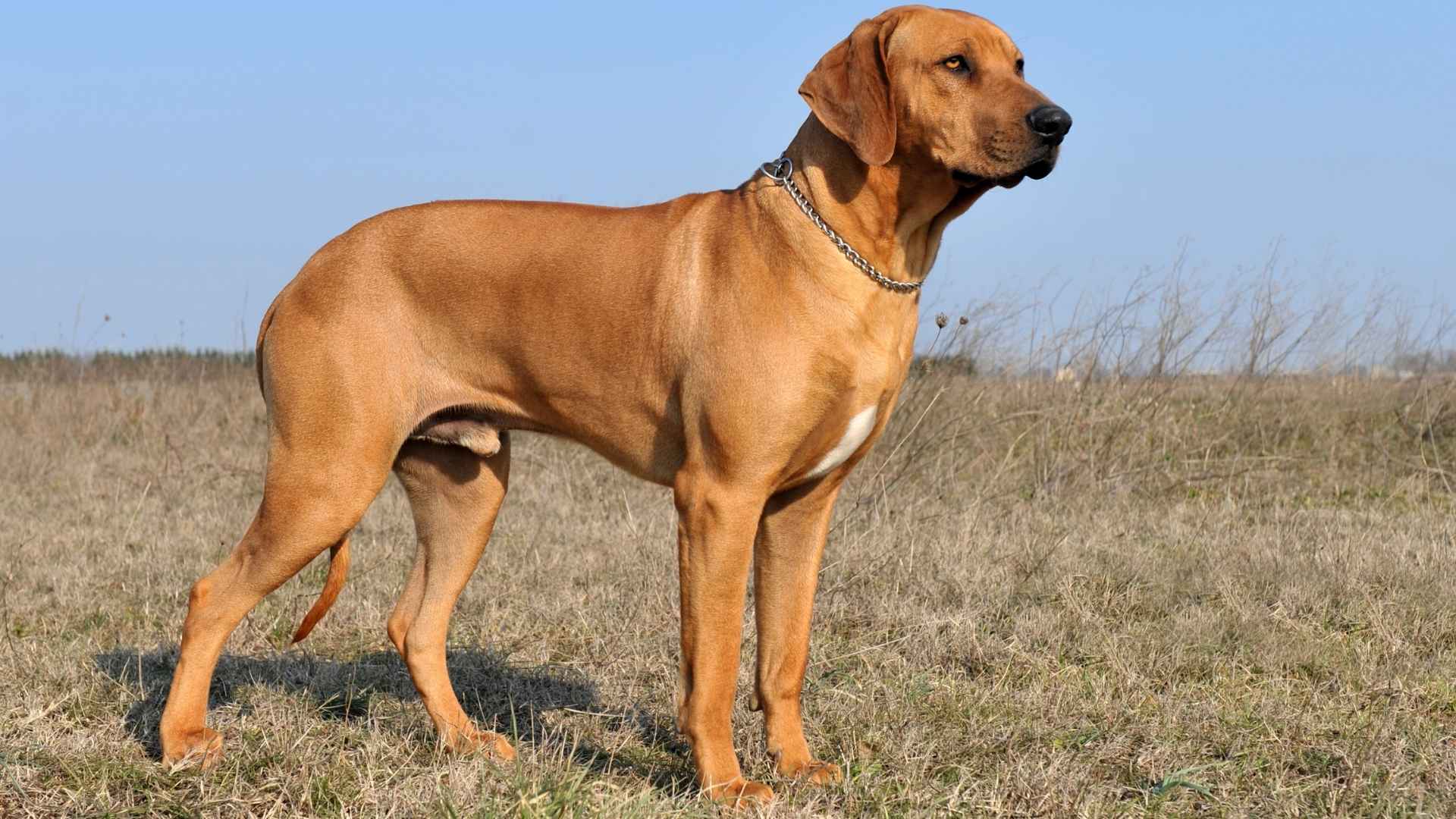Africa’s vast and varied landscapes have given rise to a captivating array of dog breeds, each shaped by the unique environments and cultures they hail from. From the sun-scorched savannahs to the lush, dense forests, these dogs have not only survived but thrived, adapting over generations to become skilled hunters, loyal protectors, and cherished companions. Their distinct characteristics reflect the diverse ecosystems and traditions of the continent, making each breed a living testament to Africa’s rich biological and cultural heritage.
These remarkable canines are far more than pets, they are symbols of resilience, intelligence, and deep-rooted connection to the communities they serve. Many African dogs have adapted to the diverse climates and terrains of the continent. Their histories are deeply intertwined with the cultures and communities they originated. Indeed, whether they guarded livestock, tracked game, or provided companionship, their roles have been as multifaceted as the landscapes they inhabit.
Exploring African dog breeds is not just an encounter with extraordinary animals, it’s a journey through history, environment, and human connection. Their stories reveal a bond forged through centuries of shared life, reflecting both the spirit of the people and the soul of the land.
African Dog Breeds
1. Basenji
Among African dog breeds, the Basenji stands out as a truly ancient and captivating companion. With its graceful, compact body and tightly curled tail, this 24-pound marvel exudes elegance and agility. WebMD states that Basenjis are intelligent and self-reliant dogs originating from Africa. Often likened to a cat, the Basenji is famous not only for its self-grooming habits and furniture-scaling antics but also for its unique lack of barking.
Instead, it produces a distinctive yodel-like sound known as a barroo. Highly alert, the breed is known for its independent streak, reserved nature with strangers, and deep loyalty to its family. However, Basenjis require mental stimulation and physical activity, as boredom may lead to mischief or attempts to escape.
History
The Basenji’s roots trace back thousands of years to Central Africa, where it served as a prized hunting companion. Revered by ancient civilizations for its sharp tracking abilities, it was skilled at flushing out small game.
Evidence of the breed’s long-standing relationship with humans appears in Egyptian tomb art, and it is believed these dogs were once gifted to Pharaohs. Their lineage likely predates written history, with some experts noting a strong resemblance to the earliest domesticated dogs.
Fun Fact: This smart breed is often considered the only truly ancient African dog breed still in existence today.
2. Boerboel
The Boerboel is admired for its impressive size, strength, and devotion to family. With a muscular frame that can reach up to 27 inches in height and weigh over 150 pounds, this South African Mastiff is the embodiment of power and poise. The AKC describes the Boerboel as a smart, self-assured, and composed breed.
Despite its intimidating appearance, the Boerboel possesses a calm, confident temperament and a strong desire to protect its loved ones. Well-suited for homes with space to roam, they thrive in environments where they can play and patrol, making them ideal guardians for rural or suburban households. However, early training and socialization are critical to managing their assertiveness and territorial instincts.
History
Developed by South African settlers, known as Boers, in the 1600s, the Boerboel traces its ancestry to European mastiffs and bull-type dogs brought to defend isolated farms. Over generations, these dogs were bred with native African breeds, giving rise to the Boerboel: a fearless protector capable of facing threats as formidable as lions and baboons.

Known as the “farmer’s dog,” the Boerboel’s role extended beyond muscle; these dogs had to be intelligent and perceptive enough to distinguish between danger and welcome guests.
Fun Fact: Despite their formidable size, Boerboels have also proven successful as therapy dogs, showcasing a gentle side, especially with children.
3. Rhodesian Ridgeback
Known for the distinctive ridge of hair along its back growing against the rest of its coat, this powerful hound weighs between 70 and 85 pounds and stands up to 27 inches tall. Originally bred for endurance and bravery, the Ridgeback is an energetic companion.
PetMD states that the Rhodesian Ridgeback is a smart and gentle dog that can be an excellent family companion in a suitable home. These dogs require ample physical activity and mental stimulation, excelling in tasks that tap into their keen instincts and strong work ethic. Loyal and affectionate with family, they can be independent and headstrong, making early training and socialization essential.
History
The Rhodesian Ridgeback originated in southern Africa through the strategic blending of native Khoikhoi ridged dogs with European breeds like Greyhounds and Terriers brought by Dutch settlers. This hybrid gave rise to a breed both resilient and resourceful, capable of tracking and confronting formidable predators, including lions.
In the late 19th century, hunter Cornelius van Rooyen refined the breed for big-game pursuits. A formal breed standard was established in 1922, ensuring the survival and recognition of this uniquely African dog.
Fun Fact: Some Rhodesian Ridgebacks are born without the characteristic ridge and are referred to as “Ridgeless Ridgebacks.”
4. Sloughi
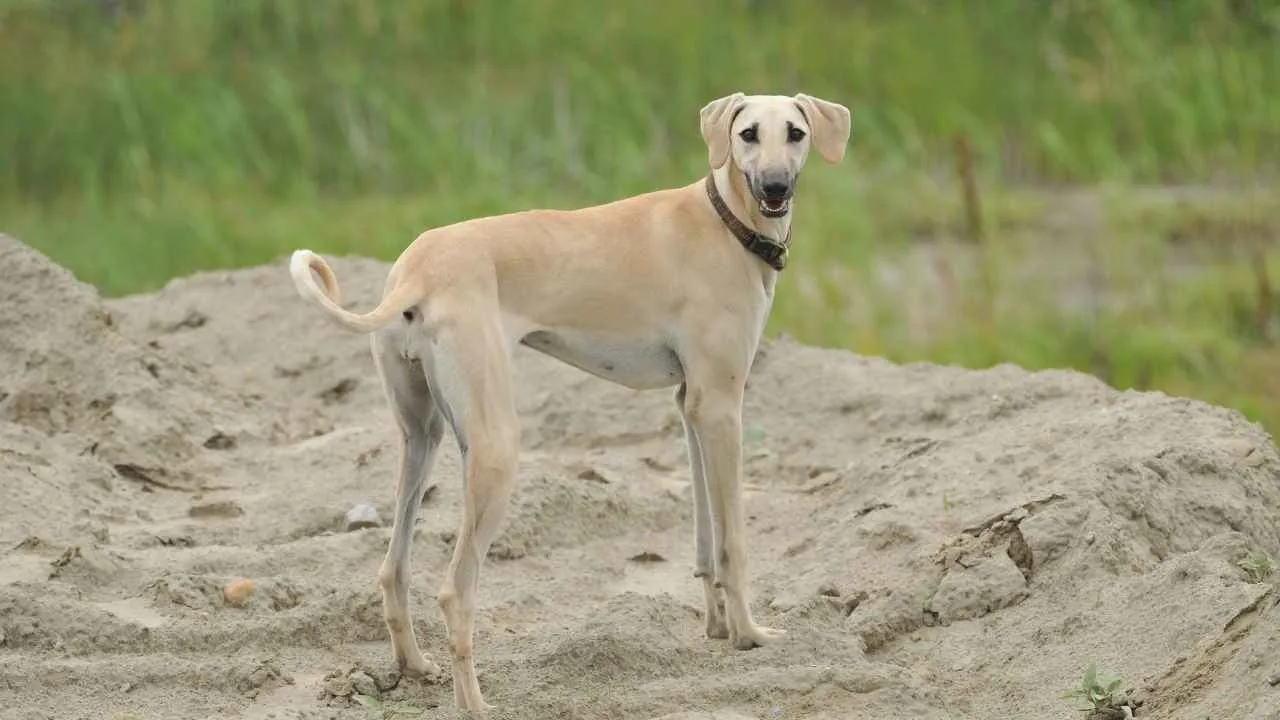
Among the elite of African dog breeds, the Sloughi, often referred to as the “Arabian Greyhound,” commands admiration with its graceful form and poised temperament. Sleek and dignified, these sighthounds combine affection with aloofness, often displaying deep devotion to family while remaining reserved around strangers.
Purina describes the Sloughi as a medium to large-sized sighthound with a sleek coat and an elegant, dignified appearance. Though not natural guard dogs, their sharp instincts make them subtly protective in the presence of unfamiliar individuals. Sloughis thrive on activity and excel when given space to sprint freely, showcasing their innate agility and stamina. Their low-maintenance, short coats add to their appeal as both athletes and companions.

History
The Sloughi’s lineage traces back to North Africa, specifically Morocco, Algeria, Tunisia, and Libya. Celebrated for centuries by nomadic tribes such as the Bedouins, these dogs were treasured for their ability to chase and capture prey across vast, arid landscapes.
From agile hares to formidable gazelles and wild pigs, the Sloughi hunted with unmatched speed and endurance. Over time, the breed spread beyond the continent, with early recognition in the Netherlands and France, although it remains relatively rare today.
Fun Fact: The rare dog breed was officially recognized by the UK Kennel Club in 1972, despite its ancient and noble heritage.
5. Azawakh
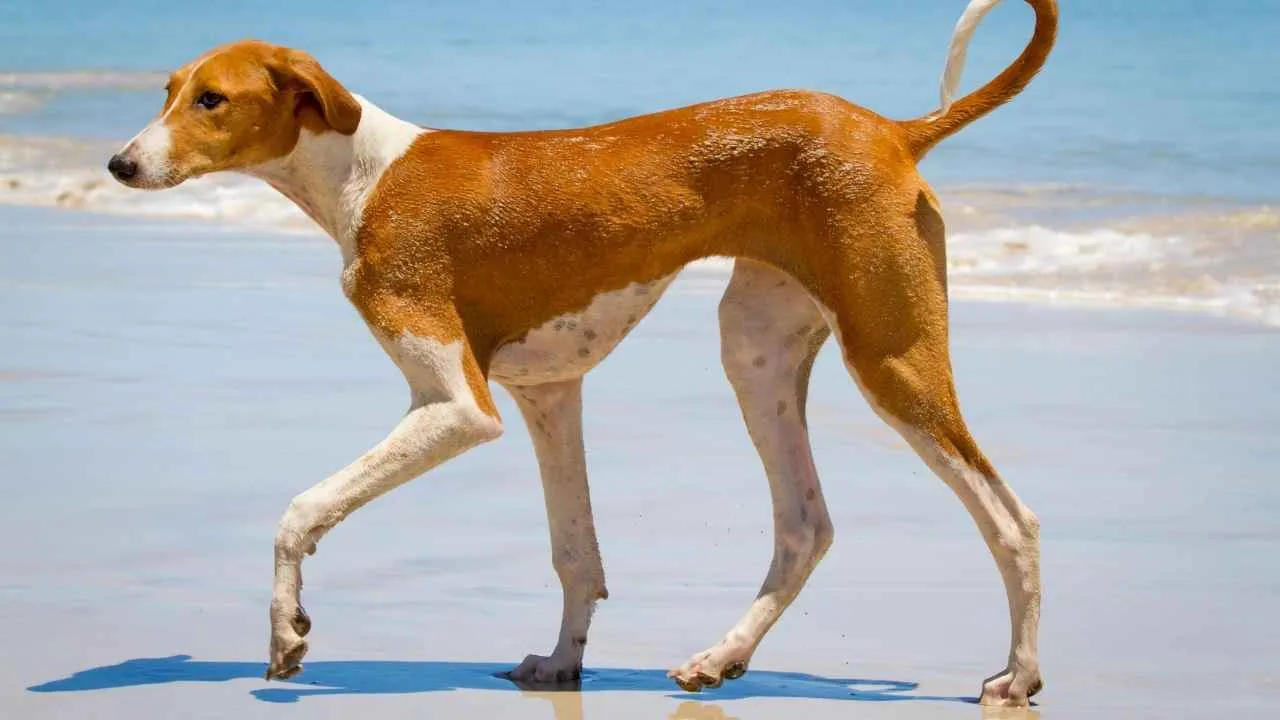
The Azawakh combines elegance with functional strength. These sighthounds are lean, fine-boned, and built for speed, possessing both agility and impressive endurance. Known for their reserved yet loyal nature, Azawakhs bond closely with their families while remaining aloof from strangers.
Their strong prey drive means they should be exercised in secure spaces, as their instinct to chase is deeply ingrained. With a short, fine coat that requires minimal grooming and no noticeable odor, these loyal dogs are remarkably low-maintenance in terms of care, needing little more than a weekly brushing to stay clean and sleek.
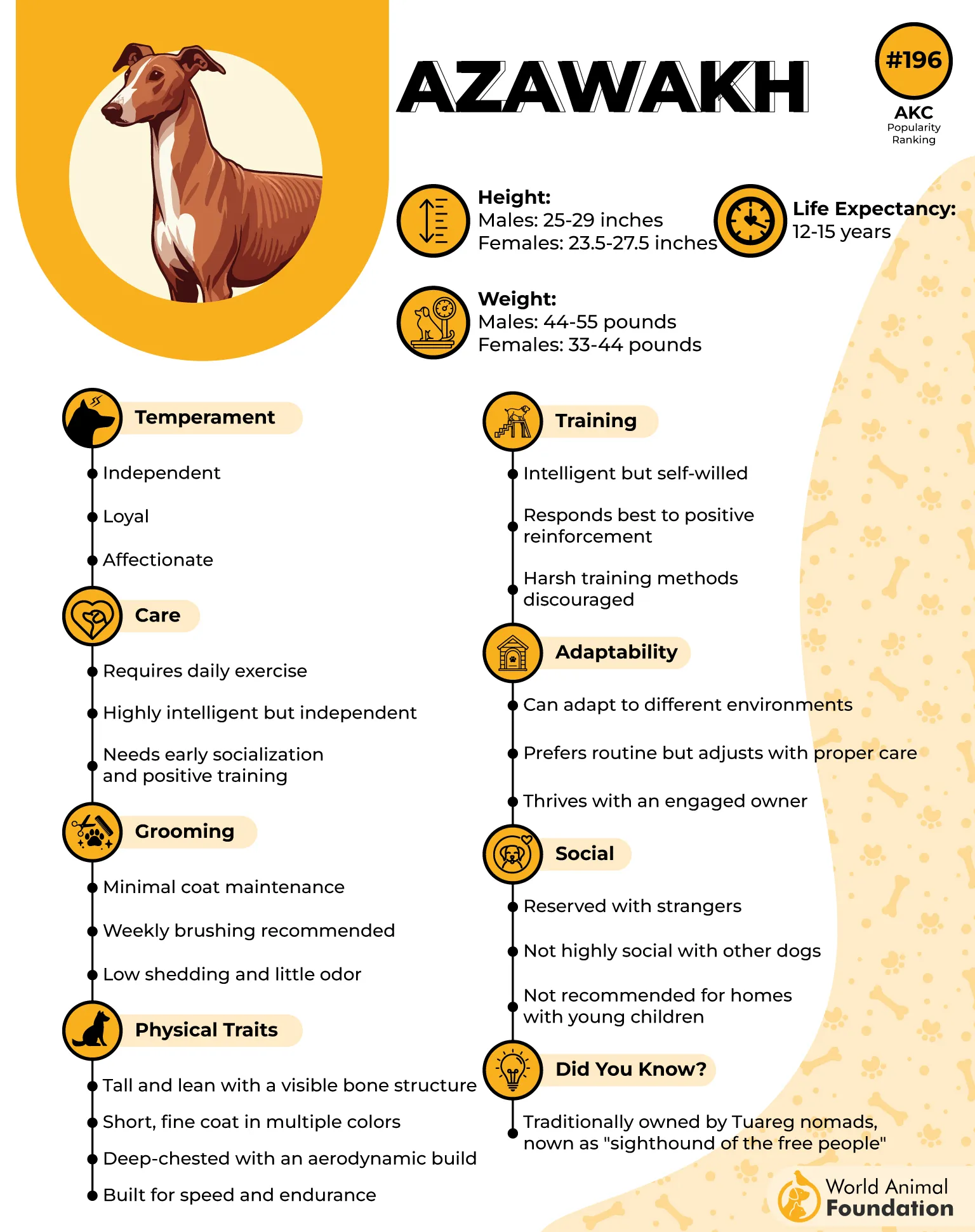
History
Originating in West Africa, particularly in the arid stretches of the Sahara and the Sahel, the Azawakh was historically bred by the Tuareg nomads, who referred to them as “idii n’illeli”, meaning “sighthound of the free people.” These dogs were more than hunters; they were guardians of encampments and flocks, living as valued family members.
Their favored prey included antelopes, wild boar, and hares, and they thrived in rugged terrain, navigating harsh landscapes with grace and resilience. Though modern threats and technologies have reduced their traditional roles, the Azawakh remains a symbol of strength and loyalty in the region.
Fun Fact: Despite their fine build, Azawakhs are incredibly durable and rarely suffer injuries, even when navigating rough terrain.
6. Saluki

Known for their slim, athletic build and graceful stride, these hounds were bred for speed and stamina across vast desert terrains. Hills Pet explains that while Salukis can differ significantly in appearance, they all share a typical greyhound-like structure, featuring long, slim legs, a narrow frame, deep chest, gently arched loin, tapered waist, and an extended tail.
Salukis are calm, gentle, and deeply devoted to their families, though they often maintain a reserved demeanor with strangers. With a high prey drive and independent spirit, their exercise needs must be met in secure areas, as their instinct to chase is both powerful and unpredictable. Though active outdoors, indoors they relish comfort and can spend hours lounging in cozy, warm spaces.
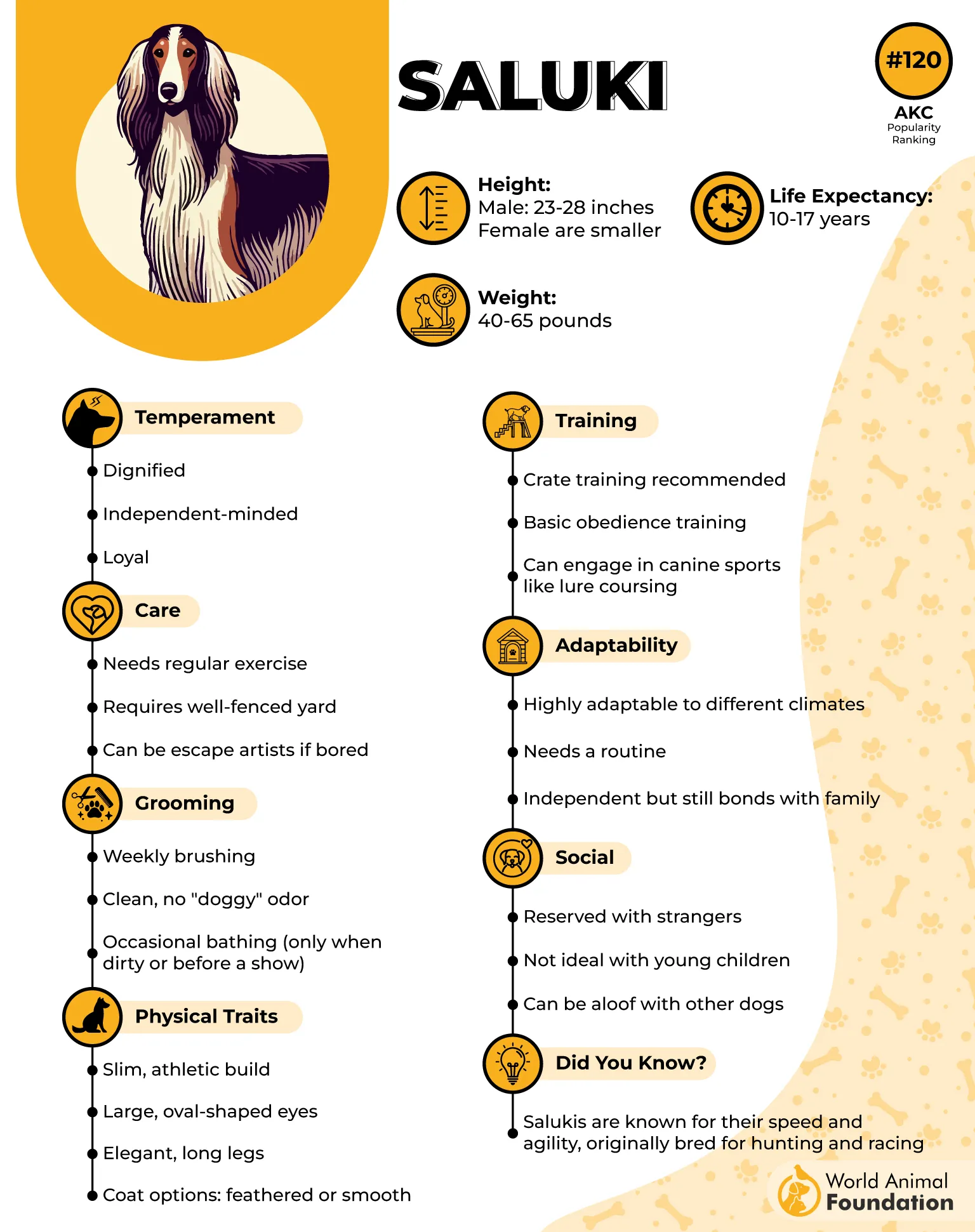
History
The Saluki’s ancient origins stretch back to the time of Egyptian Pharaohs and Persian nobility, where they were revered as noble and sacred. In Bedouin culture, where most dogs were shunned, the Saluki was uniquely honored, allowed inside tents, and given the title El Hor or “the noble one.”
Carefully protected from crossbreeding, the Saluki has remained remarkably consistent in form for thousands of years, with tribes across the Middle East developing variations suited to different terrain and prey. Though the breed gained recognition in England in the early 1900s, its true test has always been performance, especially in coursing swift desert game.
Fun Fact: Salukis were the only dogs permitted to live inside Bedouin tents due to their revered status.
7. Aidi
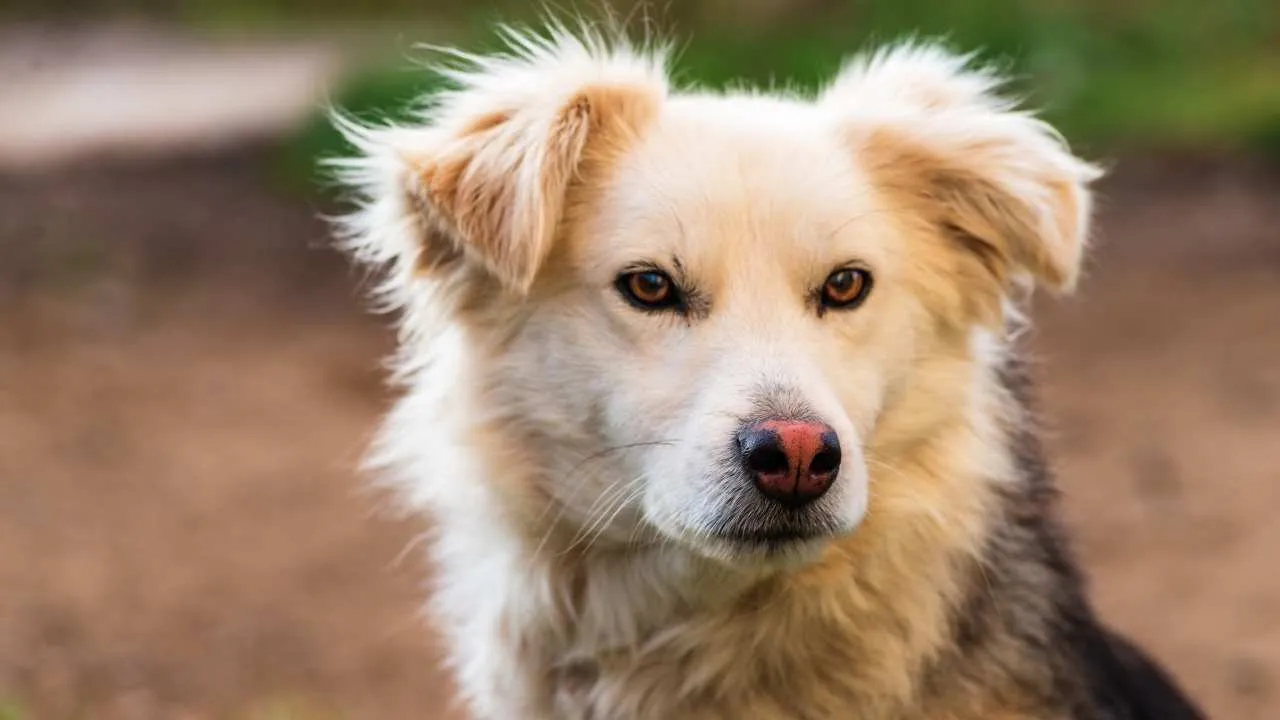
The Aidi, also known as the Moroccan Atlas Shepherd Dog, is a robust and vigilant member of Africa’s diverse canine legacy. With a double dense coat, expressive eyes, and a powerful frame, this breed was built for both protection and endurance. Fiercely loyal to its family and naturally territorial, the Aidi excels as a guardian, displaying courage and confidence in the face of potential threats.
Though often wary of strangers, it forms deep, affectionate bonds with its owners. Their active nature calls for regular physical activity, be it long hikes, vigorous play, or purposeful work, and their coat demands consistent grooming, especially during seasonal shedding.
History
Hailing predominantly from Morocco’s Atlas Mountains, these affectionate dogs have long served alongside the Berber tribes as a protector of flocks and families. While many associate the breed with Morocco, some historians believe its roots extend to the Eastern Mediterranean coast, arriving westward with the ancient Phoenicians.
Others trace its ancestry to the Great Pyrenees or link its spread to nomadic Berber migrations across North Africa. Regardless of origin, the Aidi’s role has remained constant: safeguarding livestock and homes. In Moroccan tradition, they’ve often been paired with the Sloughi—combining the Aidi’s keen nose with the Sloughi’s speed for effective hunting.
Fun Fact: Aidi dogs are so valued for their scenting ability that they were historically partnered with Sloughis to form an elite hunting team.
Conclusion
Africa’s canine heritage is as rich and varied as the continent itself, shaped by centuries of environment, necessity, and culture. From the barkless, yodeling noises of the ancient Basenji to the steadfast loyalty of the Aidi and the regal endurance of the Sloughi, these breeds reflect a deep connection between people and dogs. Their physical features, whether the Basenji’s tightly curled tail or the Sloughi’s sleek build, are not only functional but steeped in history. Traits such as white markings, blocky heads, or keen senses have been honed for survival and companionship, embodying both form and function across Africa’s vast landscapes.
Though breeds like the native ridged Khoikhoi dog, once noted by Dutch colonists, remain lesser known today, they contributed to the development of other breeds, including some mastiff types and various terriers. Organizations like the American Kennel Club (AKC) are increasingly recognizing the value of these ancient and distinctive lineages. As global interest grows, African dog breeds continue to enchant, offering a legacy of resilience, intelligence, and beauty that transcends borders.


